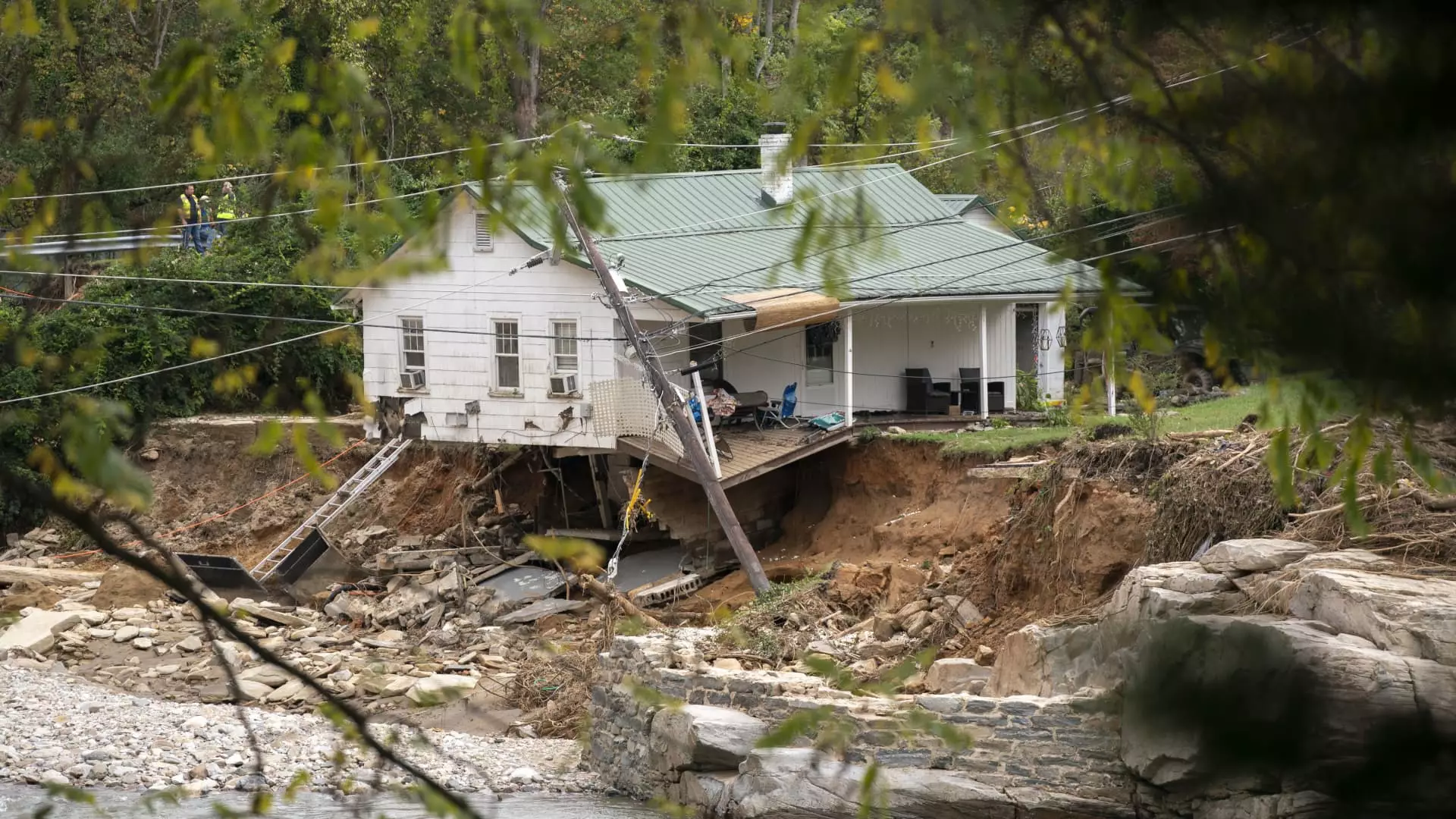In recent years, the implications of climate change have dramatically shifted the landscape of home buying, particularly in areas prone to extreme weather events. With natural disasters causing insured losses to skyrocket—Hurricane Helene, for instance, resulted in insured losses exceeding $6 billion—the conversation around property insurance is evolving rapidly. While insured losses illustrate the financial fallout for homeowners, the more alarming reality lies in the much higher uninsured losses, especially for those living in regions like North Carolina, where many properties lack adequate flood insurance.
A significant contributing factor to the low rates of flood insurance in areas such as North Carolina is the reliance on Federal Emergency Management Agency (FEMA) flood zone designations. Traditionally, homeowners believe flood coverage is unnecessary if their properties lie outside these designated zones. In North Carolina, only about 4% of homes fall within FEMA flood zones, insinuating a false sense of security for the remaining population. However, emerging data from climate risk assessments conducted by firms like First Street reveal that the real flood risk is considerably underestimated, with nearly 12% of homes now recognized as vulnerable to flooding.
First Street is pioneering a new wave of risk-assessment technology, developing climate risk scores that comprehensively evaluate how properties stand against various environmental threats, including flooding. By integrating data regarding climate change’s impact on weather patterns into their risk metrics, they provide a crucial tool that enables potential homeowners to make informed decisions about their future investments. This innovative technology represents a shift in how risk is quantified and how informed decisions can be made in real estate transactions.
With the integration of First Street risk scores into Zillow listings, buyers now have unprecedented access to detailed, property-specific information regarding climate risks. These risk scores meticulously outline the likelihood of flooding, wildfires, and other climate-related disasters both now and in the future. Specifically, prospective buyers can see how risk levels are projected to change over 15 and 30 years—the typical length of fixed-rate mortgages. This feature not only informs buyers but also enables real estate agents to guide their clients with relevant insights about potential insurance needs, thus optimizing long-term financial planning.
Zillow’s chief economist, Skylar Olsen, emphasizes that as climate risks become a primary consideration for buyers, sellers will similarly need to adjust their selling strategies. The new climate risk data available on property listings showcases the growing blend of real estate and environmental science, allowing for greater transparency and more informed purchase decisions.
As awareness about climate risks rises, so too does consumer behavior. Recent surveys indicate that over 80% of home buyers consider climate risk when shopping for a property. This burgeoning concern places flood risk at the forefront of buyers’ minds, surpassing other issues like fire hazards. The implications of this shift are profound; a Zillow analysis revealed that newly listed homes are increasingly exposed to significant climate risks compared to those listed five years ago. For instance, 16.7% of current listings are now at major wildfire risk, and 12.8% face serious flooding potential.
Such shifts in consumer consciousness will eventually influence property values in affected areas. As climate risks and insurance costs rise, a natural adjustment in home prices is expected. Homeowners in high-risk locales may find their property values diminishing as prospective buyers weigh the risks associated with insurance necessities and affordability.
The incorporation of climate risk data into real estate transactions marks a critical evolution in the industry. It signifies a proactive shift in perspective—the understanding that homeowners need to consider their exposure to environmental risks irrespective of FEMA flood zone designations. As climate change continues to redefine weather patterns and their resulting damages, this innovative approach to property assessment will be crucial.
As the consequences of climate change become more apparent, the real estate market is grappling with the rising importance of environmental risks in home buying decisions. Homeowners and prospective buyers alike must navigate this new reality with greater scrutiny and awareness, leading to informed choices that will safeguard their futures against the unpredictable nature of our changing climate.

